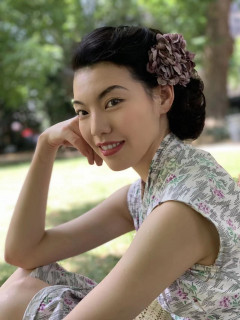Artist statement
My second-year project is based on the study of the Medieval grotesque.
In the Middle Ages, grotesques were fantastic, monstrous or mythical figures used for decorative purposes and are an important part of all traditional cultures around the world, not just the European Christian traditions. They come in all shapes and sizes and often combine human and animal elements. These grotesques or monsters made their way, not only onto the pages of illuminated manuscripts but also they crouched on the roofs of European cathedrals and guarded the gates of temples in East Asia. The grotesque played a complex role in medieval society and operated in a variety of ways, instilling feelings of fear and revulsion as well as wonder and devotion.
Medieval theorists saw beauty as an intellectual principle and a symbolic language.
Proportion was viewed as a key element of beauty, while ugliness violated the rules of proportion and was seen as a dissonance. So the ideal perfect body had perfect proportion and was a kind of sacred temple: all processes that could weaken the body’s purity – such as sex, sickness, and disability were, as far as possible, excluded. At the same time, the presence of the grotesque is a recognition of the whole life cycle: birth, death, and decay. Monsters are also of the divine order of nature: if a proportionate body is a static perfection, then a grotesque body is dynamic structural perfection. This is also why in East Asian culture, monsters, fairies, and angels can be transformed into each other, and their reverence for immortals and the fear of ghosts make people present two extremes of aesthetics when creating. Craftsmen deconstructed and recombined animal forms according to legends or their own imaginations. The more mutated and supernatural were the monsters, the more incredible and powerful they were.
In the contemporary context, it is difficult to understand the fondness that people of the Middle Ages had for the grotesque, because today the grotesque is often equated with demons and evils. People find art and morality in conflict because they try to reconcile modern aesthetics with classical moral conceptions. In fact, the grotesque and anything that brought aesthetic pleasure to the medieval man must be ethical. My own interpretation or ‘fusion’ is based on revising certain traditional ideas, preserving what I believe still has value from the past and discarding what appears to me to have lost its meaning.
For my artworks, I have collected and recreated grotesque images from different cultures using the craft of stained glass, and techniques of gold leaf gilding on raised gesso – quintessential media of the Middle Ages. These techniques represent the medieval love of light and colour. This period in history shows a different sense of colour than subsequent eras since they were mainly limited to strong and clear primary colours, creating extraordinarily powerful effects with light. Such use of colour and light in the stained glass manifests a pure and radiant beauty – leading us beyond the perceived and temporary world towards what is hidden and eternal.
Bio

Jingshi Wang was born in Beijing China in 1993.
She studied printmaking in China central academic of fine art. After graduated she did the master of fine art in Goldsmith, University of London. She was interested in medieval narrative structures and handicraft which lead her to Princes' Foundation School of Traditional Art. During her two years in school of traditional art she worked with stained glass and gilding on raised gesso which are quintessential media of the Middle Ages. She has experimented relentlessly with glass painting techniques and explorations of surface treatments.
Her work shows a very distinctive medieval aesthetic through created light and uncreated light. And the images inside were always inspired by medieval grotesque and folklore.
Contact
Instagram @lucywang0313 @cat.thigh






